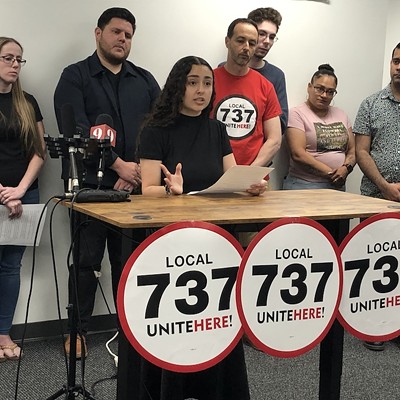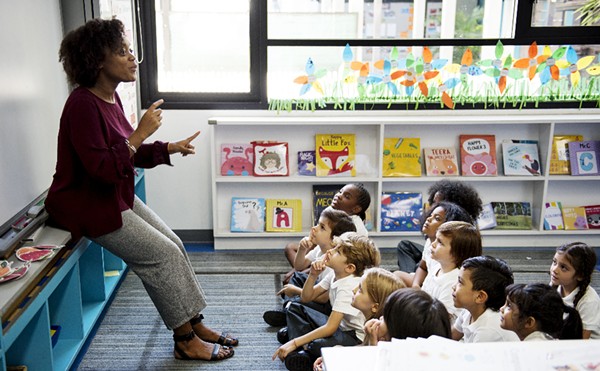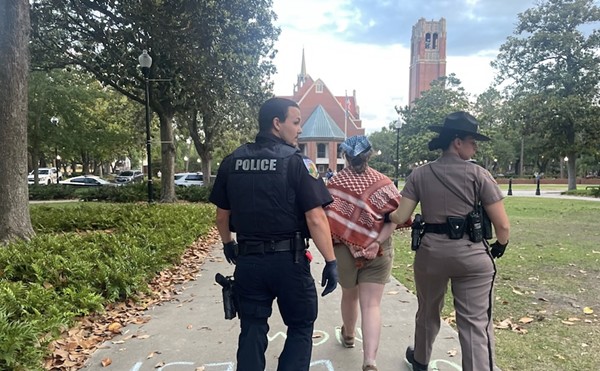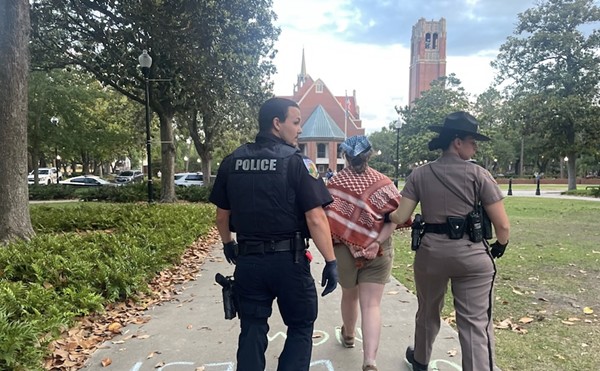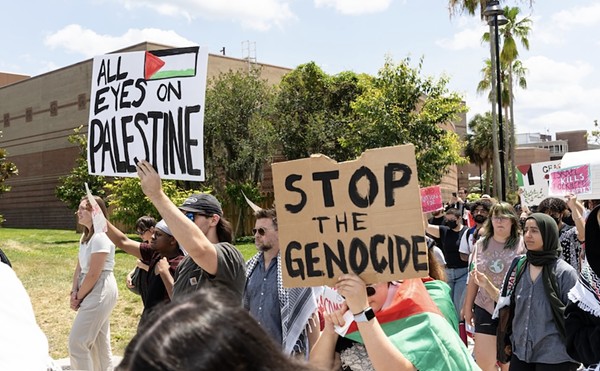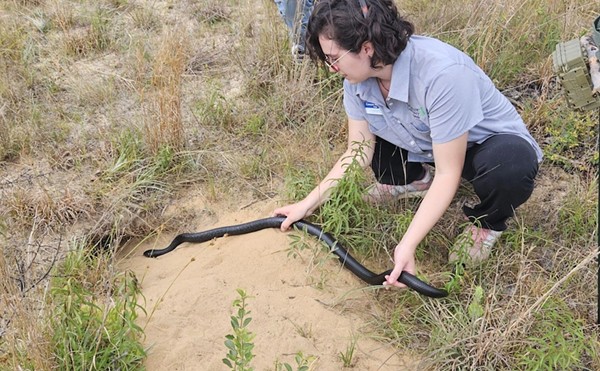It's one of the most eclectic commercial stretches remaining in downtown Orlando. Stretching from the picturesque, historic Dr. Phillips Center for Performing Arts down to the quickly growing medical community surrounding the Florida Hospital campus, the sidewalks of North Orange Avenue near Lake Ivanhoe are littered with aesthetic distractions. Once known simply as Antique Row, the area has developed schizophrenically into both an upper-crust lifestyle showcase of galleries, spas and boutiques and a comfortable haven for old stalwarts like Rock & Roll Heaven, Boom-Art, Flo's Attic and the Ivanhoe Grocery. There's an African Braiding Center, ladies lunching at White Wolf Café and Savoy, a gay bar.
Now it's "Main Street." Or more specifically, it's Ivanhoe Village, one of Orlando's five city-funded Main Street projects. This convoluted revitalization program — the National Trust for Historic Preservation sets the ground rules, but cities pay the bills — is ultimately a marketing machine, akin to a homeowners' association for businesses. Essentially, the Main Street districts front $10,000 to show their interest, and the city matches that with $50,000 for coordinated marketing efforts, most of which goes to hiring a director.
But the program inherently favors already "mature" business districts — four of the five reside in or adjacent to wealthy District 3, which houses College Park; the other is shared by the mostly well-off districts 1 and 4 — and that gives the appearance that this is welfare for the rich; in other words, a city program that gives tax dollars to neighborhoods that don't need it. Also, the Main Street agenda looks like yet another instance of the city pretending to be something that it's not — and at least in Ivanhoe Village, not everyone is buying into it.
Orlando Mayor Buddy Dyer announced the Main Street program at his State of Downtown speech in October 2007, suggesting an initial kitty of $200,000 in city support. It would be the first urban (meaning city-coordinated) Main Street program in the Southeast. By March, the city had designated its first two projects, Ivanhoe Village and Downtown College Park. Participating districts had to form a board of directors and meet national (largely historical) criteria — and most important, they had to show that they could produce a non-public fund match in order to be eligible for their first-year grant.
"We want to kind of put them through the paces," says Pauline Eaton, the city's Main Street point person. "They have to come up with matching funds. They have to have insurance. They have to prove to us that they have the organization. The first year they have to prove they can raise the $10,000 non-public funds match, they get the $50,000 the first year. Then each year, we back out by $5,000, and they have to raise $5,000 more."
The city spent $100,000 on the program in the last fiscal year and is on target to give out another $240,000 with the addition of three new districts — Mills Fifty, Downtown South and Audubon Park. Of their annual allotment, each district can spend no more than $35,000 for the annual salary of a mandatory full-time manager. The rest can be used as the board sees fit: block parties, advertising, signage, streetscaping.
"The idea with Main Street is we want to start them out with small successes in the beginning, and then they can work their way up," says Eaton, adding that the program will eventually help districts establish their own fundraising mechanisms that will wean them off the city money.
Commissioner Robert Stuart, whose District 3 has siphoned most of the Main Street money, is optimistic about the effect the program will have on his district. If the district thrives, it means more money for the city; the investment is recouped in tax revenues.
"Main Street is an enhancement to what is already there," he says. In his view, it would be foolish for him not to point his constituents toward the pot of money that's there for the taking. Some other districts don't possess the required historic buildings or the necessary commercial and residential overlap. For them, Stuart points to a new program developed by Eaton called Market Districts, whose aims and benefits are identical to the Main Street program. (That name is federally trademarked, so the city had to come up with its own moniker).
The city did try to establish a Main Street in the impoverished Parramore neighborhood, but that fell through. So far, the city has no Market Districts up and running. Stuart says he's spoken with commissioner Tony Ortiz about applying the program to areas in his heavily Hispanic District 2, while similar plans are on the horizon for commissioner Sam Ings' District 6, which includes MetroWest and several predominantly African-American neighborhoods.
Meanwhile, in Ivanhoe Village, the Main Street director says everything is going to plan. "We're rocking here at Ivanhoe Village," says Charles Rudd, who passed the required two-year certification process prior to managing the Main Street program in Eustis. He says that although they are still getting the word out among area businesses, a lot of people jumped on in the beginning with money — including Florida Hospital, which holds a seat on the board. Although a number of businesses haven't put up funds for the project, Rudd says their very presence here is a benefit to the Main Street. They bring character.
The coalition may already be working in unexpected ways, he says. Recent revelations that the Florida Department of Transportation was going to repave North Orange Avenue and remove a number of street parking places were met with an organized voice of resistance, one that pressured FDOT to replace some of the lost spaces nearby.
Rudd sees an Ivanhoe Village of unique architecture and "flourishing" arts, an increasingly high-end lifestyle. The economy may be bad now, he admits, but the ship is turning and "at some point we're going to have to hold on tight!"
He may be right. At a recent Friday happy hour event at The Spa, business owner Andy Swart beamed with pride about the Main Street project as the well-to-do experienced their first-ever fish pedicures over martinis.
But just a block up, Nora Brooker — who's run Nora's Lake Ivanhoe Wine and Cigars for the past four years — calls the whole thing "bullshit." She says that the Main Street people asked her for $600 up front, even more if she had additional employees — though at recent events they've used outside sources for catering rather than one of the half-dozen Ivanhoe Village restaurants. Brooker suspects that Rudd and Main Street are trying to promote a manicured lifestyle that doesn't match the iconic, though rustic, surroundings.
"This is Antique Row! We're smelly people down here!" she says, laughing. "We're all independent businesses. We don't have a plethora of money to throw around."
[email protected]

